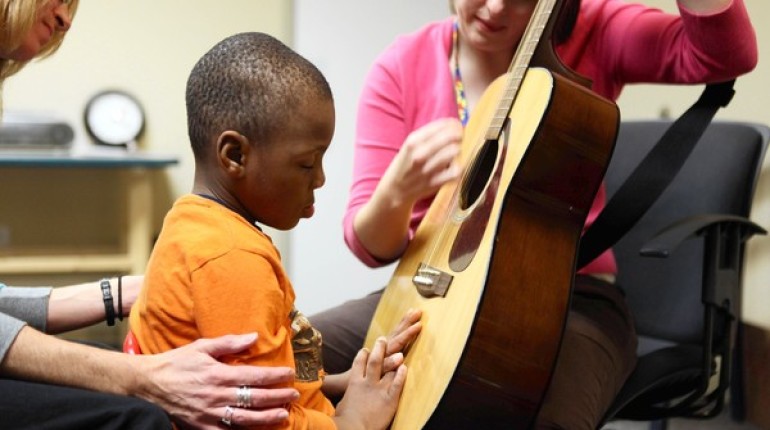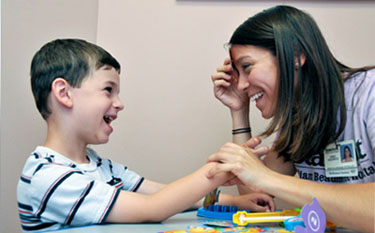Autism Spectrum Disorder (ASD) and Autism are both general terms for a group of complex disorders of brain development. These disorders, to some extent, are characterized by difficulties in social interaction, verbal and nonverbal communication and repetitive behaviors.
ASD affects over 3 million individuals in the U.S. and tens of millions worldwide. Moreover, government autism statistics suggest that prevalence rates have increased 10 to 17 percent annually in recent years. And the downfall is that, there is no cure for autism.
There are no medications that can cure ASD or treat the core symptoms. However, there are therapies and behavioral interventions that can help some people with ASD function better.
Autism Spectrum Therapies (AST) provide premier evidenced based interventions to individuals with autism. Therapies and behavioral interventions are designed to remedy specific symptoms that can bring about substantial improvement.
Applied Behavior Analysis (ABA)—a treatment approach that utilizes principles of learning theory to bring about meaningful and positive change in behavior. ABA techniques have been developed for individuals with autism to help build a variety of skills (e.g., communication, social skills, self-control, and self-monitoring) and help generalize these skills to other situations.
Discrete Trial Training (DTT)—a one-to-one instructional approach utilizing behavioral methods to teach skills in small, incremental steps in a systematic, controlled fashion. The teaching opportunity is a discrete trial with a clearly identified antecedent and consequence (e.g., reinforcement in the form of praise or tangible rewards) for desired behaviors. DTT is most often used for skills that learners are not initiating on their own, have a clear, correct procedure, and can be taught in a one-to-one setting.
Functional Communication Training (FCT)—a behavioral intervention program that combines the assessment of the communicative functions of maladaptive behavior with ABA procedures to teach alternative responses. Problem behaviors can be eliminated through extinction and replaced with alternate, more appropriate forms of communicating needs or wants.
Incidental Teaching—a teaching technique that utilizes behavioral procedures; naturally occurring teaching opportunities are provided, based on the child’s interests. Following the child’s lead, attempts to communicate are reinforced as these attempts get closer to the desired communication behavior.
![]()
![]()
![]()
![]()
 Milieu Therapy—a range of methods (including incidental teaching) that are integrated into a child’s natural environment. It includes training in everyday environments and during activities that take place throughout the day, rather than only at “therapy time”.
Milieu Therapy—a range of methods (including incidental teaching) that are integrated into a child’s natural environment. It includes training in everyday environments and during activities that take place throughout the day, rather than only at “therapy time”.
Pivotal Response Treatment (PRT)—a play-based, child-initiated behavioral treatment. Formerly referred to as Natural Language Paradigm (NLP), PRT has as its goals to teach language, decrease disruptive behaviors, and increase social, communication, and academic skills. Rather than target specific behaviors, PRT targets pivotal areas of development (response to multiple cues, motivation, self-regulation, and initiation of social interactions) that are central to—and result in improvements across—a wide range of skills. PRT emphasizes natural reinforcement, wherein the child is rewarded with an item when a meaningful attempt is successfully made.
Positive Behavior Support (PBS)—uses functional assessment of problem behaviors to target the relationship between challenging behavior and communication. It integrates principles of applied behavior analysis with person-centered values to foster skills that replace challenging behaviors. The clinician carefully analyzes the functions of the behavior(s) and develops and implements prevention strategies (i.e., antecedent packages) to foster the client’s successful use of replacement skills to produce positive response in social interactions. PBS can be used to support children and adults with autism who demonstrate problem behaviors.
Cognitive Behavioral Therapy (CBT)
Cognitive Behavioral Therapy (CBT) is an intervention approach that combines cognitive and behavioral learning principles to shape and encourage desired behaviors. The underlying assumptions of CBT are that an individual’s behavior is mediated by maladaptive patterns of thought or understanding and that change in thinking or cognitive patterns can lead to changes in behavior. CBT is used primarily to help individuals with ASD improve behavior by learning to regulate emotions and control impulses. Examples of programs/approaches that incorporate CBT principles include the following.
Exploring Feelings—a structured cognitive behavior therapy program designed to encourage the cognitive control of emotions (anxiety and anger). Sessions include activities to explore specific feelings (e.g., being happy, relaxed, anxious or angry). A follow-up implementation project is completed by the child prior to the next session. The Explore Feelings program was designed for small groups of children between the ages of 9 and 12, but it can be modified for use with only one child.
Rational Emotive Behavioral Therapy—a therapy approach that focuses on helping the individual acknowledge the problems that are upsetting him/her, accept emotional responsibility for these problems, and be empowered to change. The ultimate goal is to be able to lead a happier, more fulfilling life.
Social Thinking—a cognitive-based treatment framework for preschool and school-age children and adults with social learning challenges (including ASD, social communication disorder, and other related diagnoses). It comprises strategies to target pragmatic language, social emotional learning, perspective taking, and social skills.
Image Credits: icare4autism, cobbersonthebrain.areavoice, pinterest, work,chron


